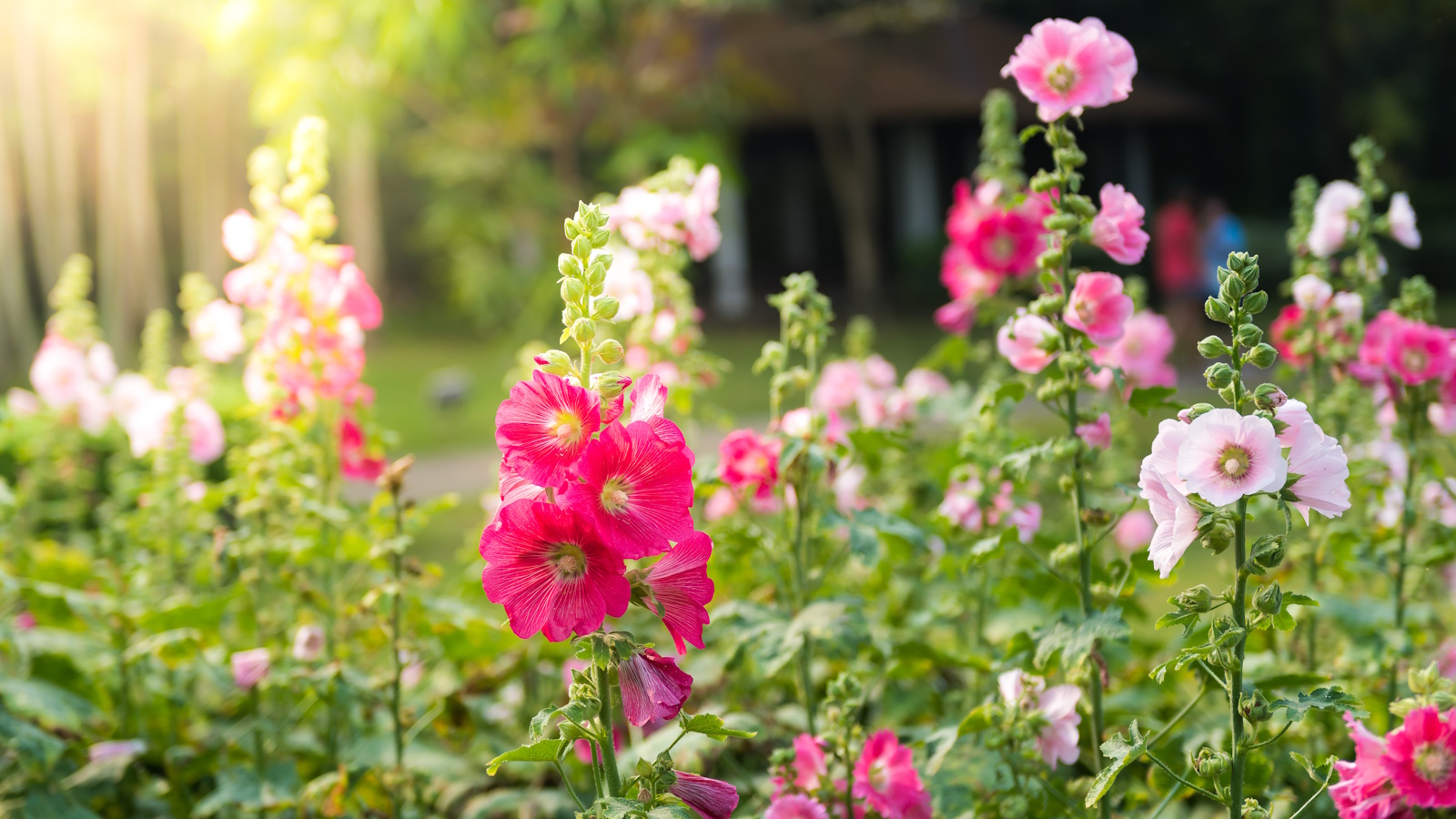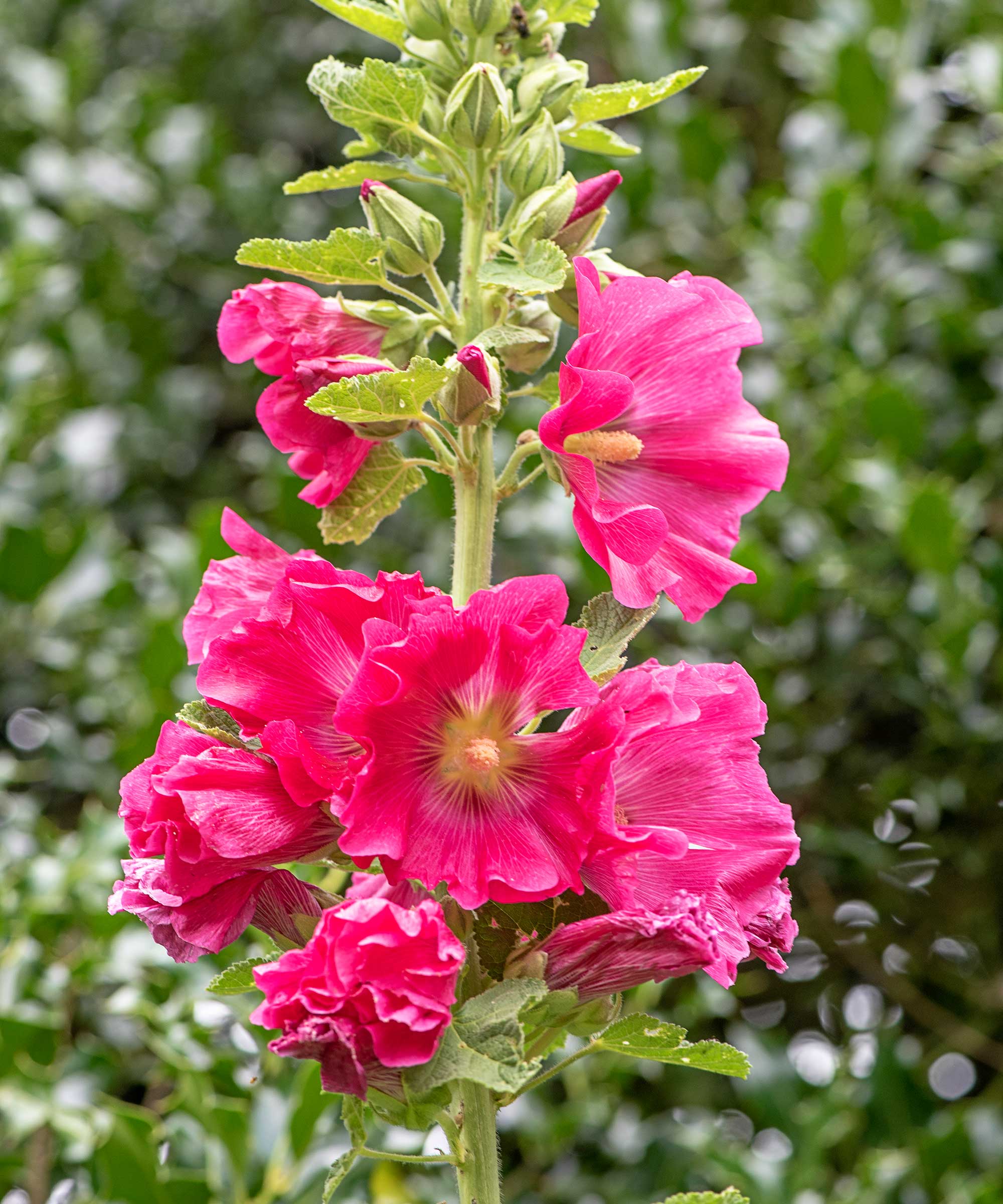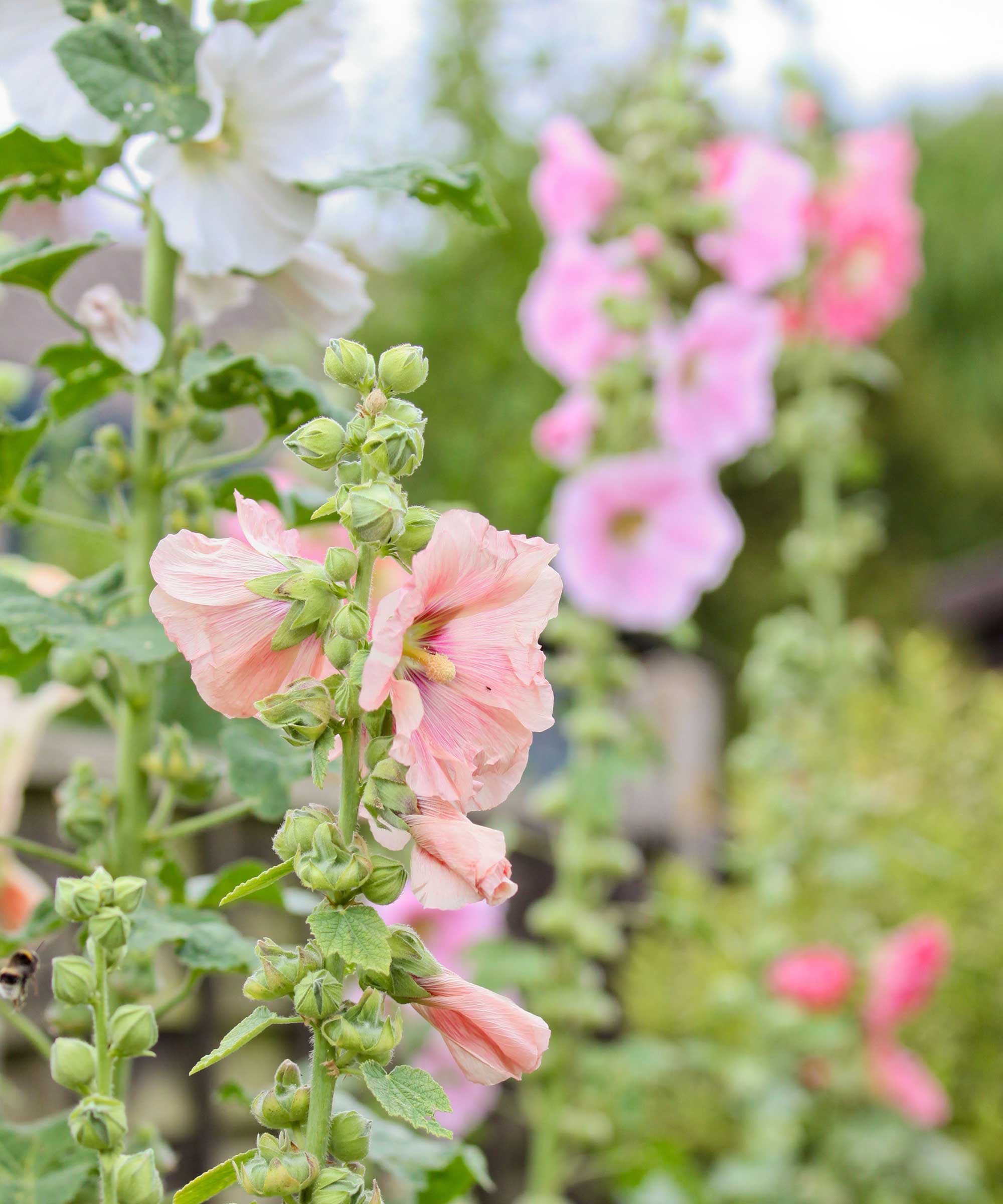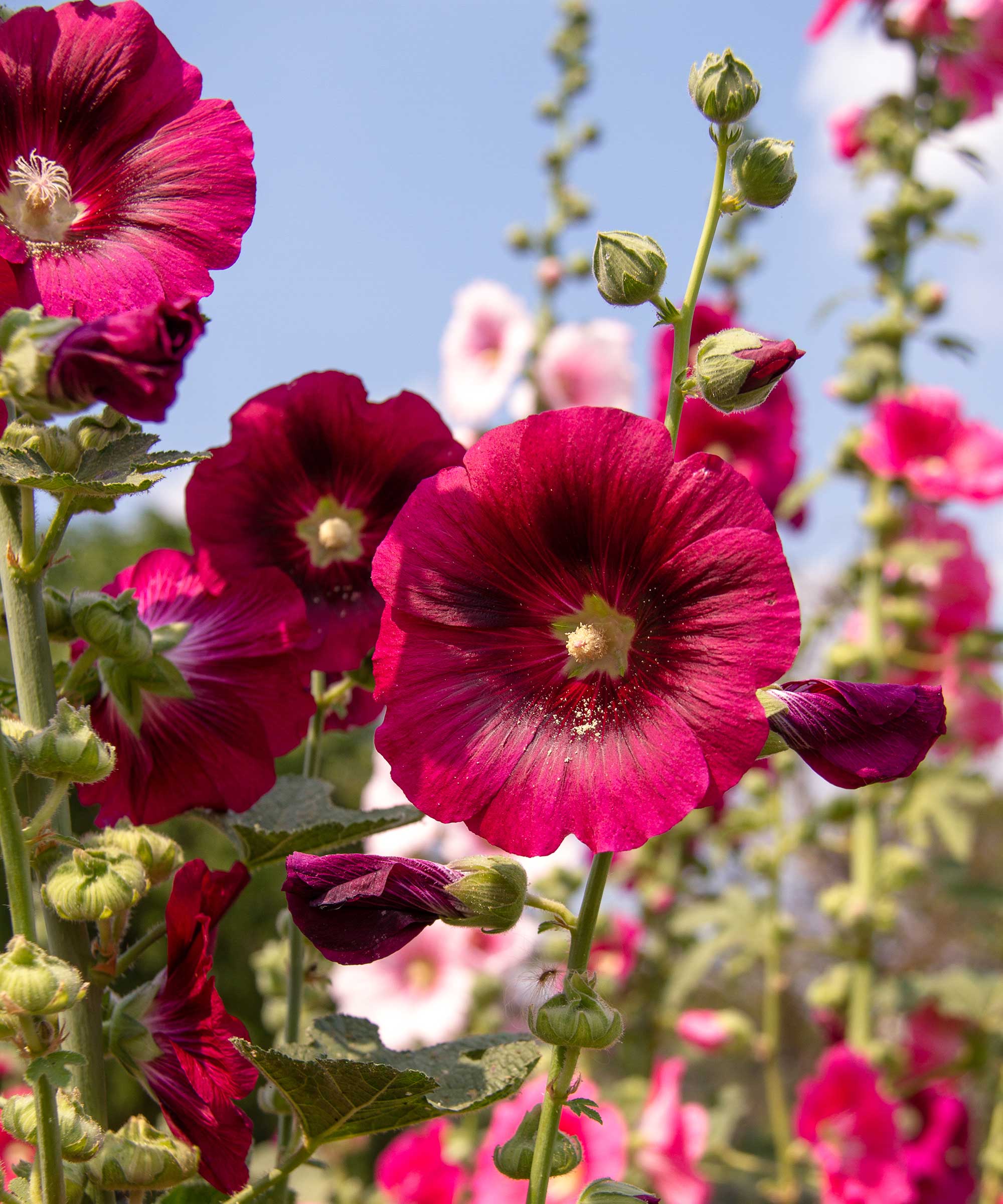
A garden blooming with flowers is every gardener's dream during the spring and summer months and it can be a sad sight when those flowers start to fade away.
Growing hollyhocks is no different, as these summer blooms will last into fall before their spectacular flowers are spent. But don't worry, there are a couple of things you can do with hollyhocks after flowering so that your flower bed can be rejuvenated once again.
If you've mastered when to plant hollyhock seeds but are left wondering what to do once the flowers are spent, look no further. Experts have shared with us what to do with hollyhocks after flowering.

What to do with hollyhocks after flowering
There are a couple of things you can do when your hollyhocks finish flowering to ensure you make the most of your plant.
1. Let your hollyhock flowers go to seed

Like harvesting dahlia seeds and collecting zinnia seeds, you can also leave hollyhocks to go to seed in fall.
'After hollyhocks bloom in a season they will set seed and die,' says Paris Lalicata, head of plant education and community at The Sill.
You will see hollyhocks setting seed by forming seed pods at the base of each spent flower. These seeds will then naturally scatter around your yard.
'Hollyhocks have a tendency to self-sow, resulting in numerous new plants the following year,' says Alex Kantor, owner of Perfect Plants Nursery.
Letting your hollyhocks go to seed after flowering is an easy way to have new hollyhocks in the next year - just let the plants do all the work for you.
2. Cut back your hollyhocks for returning blooms

If you don't want new hollyhock plants popping up in unexpected places in your yard next year and would much rather stick to planting a flower bed you have curated, you can cut your existing plants back.
'You can prolong the blooming period of hollyhocks if you deadhead spent flowers before they have a chance to set seed,' says Paris. 'This stimulates the plant to continuously produce flowers throughout the season and then you can harvest seeds if desired with the last remaining blooms,' she adds.
Knowing when to deadhead your hollyhocks is easy. Just look out for fading flowers before seed pods form.
'After they have finished flowering, trim the hollyhocks to ground level, and then continue to provide water and nutrients,' suggests Alex. 'This may encourage them to grow and bloom once or even twice more within the same season,' he adds.
You should use essential gardening tools, like these loppers from Amazon, to cut back your hollyhocks. Removing dead matter in this way will help encourage further growth.
'When the season comes to a close, cut them down again and they should return to bloom for several more years,' says Alex.
Hollyhock varieties are considered to be biennials and perennials, so choosing to plant them in your yard will bring returning blooms each year.
Grow hollyhocks at home
Enjoy bold spires of deep red hollyhocks. Their silky petals add a pop of color, growing up to 4-8 feet tall. This hollyhock can be grown in US hardiness zones 2-8.
These big, pompom flowers are in a bright pink hue. They grow up to 4-8 feet tall with rosette leaves. This hollyhock can be grown in US hardiness zones 2-8.
Grow elegant yellow hollyhock blooms which grow on spires up to 4-8 feet tall. This hollyhock can be grown in US hardiness zones 2-8.
FAQs
Do hollyhocks need to be cut back for winter?
Hollyhocks are stunning flowers that produce upright stems of bright blooms from summer to fall. Their flowers will be spent at the end of fall and the plant will need some care for the incoming winter season. Whether you choose to wait for hollyhocks to set seed or want to remove fading flowers immediately, you should cut back hollyhock stems and leaves close to the ground at the end of fall. It's also a good idea to add an extra layer of material at the base of the plant to protect roots from freezing. Hollyhock varieties are considered to be biennial or perennial, so a healthy plant will bring you returning blooms in their next season.
Just because your hollyhocks have finished flowering doesn't mean you should give up on them. Either let them go to seed or cut them back, while still giving them water and nutrients, to enjoy returning blooms.
When growing hollyhocks in your yard, you should also be aware of hollyhock rust which is a disease that damages leaves and can spread to other plants.






